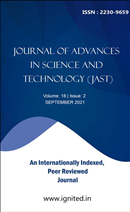Ecological Study in the Fisheries Status of Yamuna River
Impacts of Pollution on the Fisheries and Ecological Status of Yamuna River in Uttarakhand, India
Keywords:
ecological study, fisheries, Yamuna River, species, pollution, limnological conditions, water samples, phytoplankton, zooplankton, ictthyofaunal diversityAbstract
The current research was conducted from August 2018 to July 2019 in Uttarakhand, India, toexamine the variety of species and the influence of pollution on the limnological conditions of the YamunaRiver. Water samples were collected weekly from Kalsi (S1), Dakpathar (S2), and Asan Lake (S3) along theYamuna River over the duration of the investigation. Phytoplankton, zooplankton, and icthyofaunaldiversity were among the many biological and physico-chemical characteristics examined in the samples.There are 35 taxa in the phytoplankton, divided among three families. Bacillariophyceae has the greatestlevel of diversity, followed by Chlorophyceae and Myxophyceae. As with Zooplankton, 29 species from fourdistinct genera, including Protozoa, Rotifera, Copepoda, and Ostracoda were identified, with Rotiferahaving the most diversity. It was found that 24 taxa belonging to seven families and four orders weredocumented in the Icthyofauna. Aquatic creatures thrived in the ideal physico-chemical environment.Analyzing the acquired data, it was discovered that the biological and physico-chemical variables werestrongly correlated. The presence of plankton populations and a wide variety of fish indicates that theRiver Yamuna's water quality is excellent, with the expansion of these ecological markers of the aquaticenvironment being positively influenced by physico-chemical parameters.Downloads
Download data is not yet available.
Published
2021-09-01
Issue
Section
Articles






